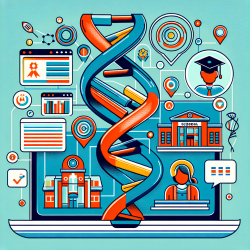Introduction
In the realm of speech language pathology, the integration of dietary guidelines is not often the first consideration. However, the research article titled Food Science Challenge: Translating the Dietary Guidelines for Americans to Bring About Real Behavior Change highlights the importance of dietary habits in the broader context of health and behavior change. As practitioners dedicated to creating optimal outcomes for children, it is crucial to consider how these guidelines can be translated into practice to support holistic child development.
The Role of Dietary Guidelines in Child Development
The Dietary Guidelines for Americans (DGA) provide science-based recommendations aimed at promoting health and preventing chronic diseases. While these guidelines have been in place since 1980, the translation of these recommendations into real behavior change remains a challenge. For speech language pathologists, understanding the intersection between nutrition and communication development can enhance therapeutic outcomes.
Implementing Research Outcomes in Practice
According to the research, successful dietary change requires a coordinated effort across various sectors, including healthcare professionals. As speech language pathologists, we can contribute to this effort by:
- Integrating nutrition education into therapy sessions, emphasizing the importance of a balanced diet for cognitive and communicative development.
- Collaborating with dietitians and nutritionists to create comprehensive care plans that address both speech and nutritional needs.
- Educating parents and caregivers about the role of nutrition in supporting language development and overall health.
Encouraging Further Research
The research underscores the need for further exploration into how dietary habits impact communication skills. Speech language pathologists are encouraged to engage in interdisciplinary research to better understand these connections. By doing so, we can develop evidence-based interventions that incorporate dietary considerations, ultimately leading to improved outcomes for children.
Conclusion
As we strive to enhance the lives of children through speech language pathology, it is essential to consider the broader context of health and nutrition. By implementing the outcomes of the research presented in the Food Science Challenge, we can contribute to a holistic approach to child development. For those interested in delving deeper into the research, the original paper can be accessed through this link: Food Science Challenge: Translating the Dietary Guidelines for Americans to Bring About Real Behavior Change.










